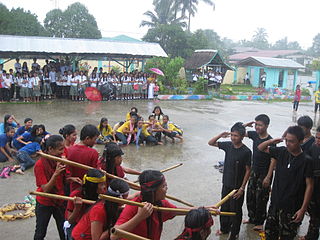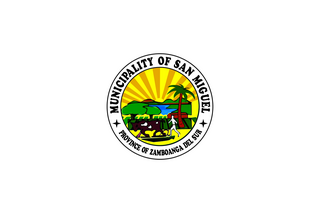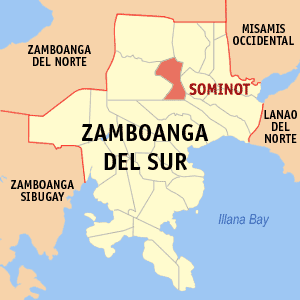
Lakewood, officially the Municipality of Lakewood, is a 4th class municipality in the province of Zamboanga del Sur, Philippines. According to the 2020 census, it has a population of 21,559 people.

Imelda, officially the Municipality of Imelda, is a 4th class municipality in the province of Zamboanga Sibugay, Philippines. According to the 2020 census, it has a population of 26,020 people.

Ipil, officially the Municipality of Ipil, is a 1st class municipality and capital of the province of Zamboanga Sibugay, Philippines. According to the 2020 census, it has a population of 89,401 people. Ipil is the most populous municipality of Zamboanga Sibugay, and the second most populous in Region IX after Sindangan.

Kabasalan, officially the Municipality of Kabasalan, is a 2nd class municipality in the province of Zamboanga Sibugay, Philippines. According to the 2020 census, it has a population of 46,884 people.

Tungawan, officially the Municipality of Tungawan, is a 2nd class municipality in the province of Zamboanga Sibugay, Philippines. According to the 2020 census, it has a population of 46,497 people.

Rizal, officially the Municipality of Rizal, is a 5th class municipality in the province of Zamboanga del Norte, Philippines. According to the 2020 census, it has a population of 15,052 people.

Tampilisan, officially the Municipality of Tampilisan, is a 4th class municipality in the province of Zamboanga del Norte, Philippines. According to the 2020 census, it has a population of 24,680 people.

Aurora, officially the Municipality of Aurora, is a 2nd class municipality in the province of Zamboanga del Sur, Philippines. According to the 2020 census, it has a population of 52,995 people.

Dumalinao, officially the Municipality of Dumalinao, is a 4th class municipality in the province of Zamboanga del Sur, Philippines. According to the 2020 census, it has a population of 32,928 people.

Dumingag, officially the Municipality of Dumingag, is a 2nd class municipality in the province of Zamboanga del Sur, Philippines. According to the 2020 census, it has a population of 48,881 people.

Guipos, officially the Municipality of Guipos, is a 4th class municipality in the province of Zamboanga del Sur, Philippines. According to the 2020 census, it has a population of 21,738 people.

Josefina, officially the Municipality of Josefina, is a 5th class municipality in the province of Zamboanga del Sur, Philippines. According to the 2020 census, it has a population of 12,205 people.

Kumalarang, officially the Municipality of Kumalarang, is a 4th class municipality in the province of Zamboanga del Sur, Philippines. According to the 2020 census, it has a population of 29,479 people.

Bayog, officially the Municipality of Bayog, is a 3rd class municipality in the province of Zamboanga del Sur, Philippines. According to the 2020 census, it has a population of 34,519 people.

Midsalip, officially the Municipality of Midsalip, is a 4th class municipality in the province of Zamboanga del Sur, Philippines. According to the 2020 census, it has a population of 33,711 people.

Pitogo, officially the Municipality of Pitogo, is a 4th class municipality in the province of Zamboanga del Sur, Philippines. According to the 2020 census, it has a population of 27,516 people.

San Miguel, officially the Municipality of San Miguel, is a 4th class municipality in the province of Zamboanga del Sur, Philippines. According to the 2020 census, it has a population of 19,838 people.

Sominot, officially the Municipality of Sominot, is a 5th class municipality in the province of Zamboanga del Sur, Philippines. According to the 2020 census, it has a population of 19,061 people.

Tambulig, officially the Municipality of Tambulig, is a 4th class municipality in the province of Zamboanga del Sur, Philippines. According to the 2020 census, it has a population of 37,480 people.

Vincenzo A. Sagun, officially the Municipality of Vincenzo A. Sagun, is a 5th class municipality in the province of Zamboanga del Sur, Philippines. According to the 2020 census, it has a population of 24,852 people.

























